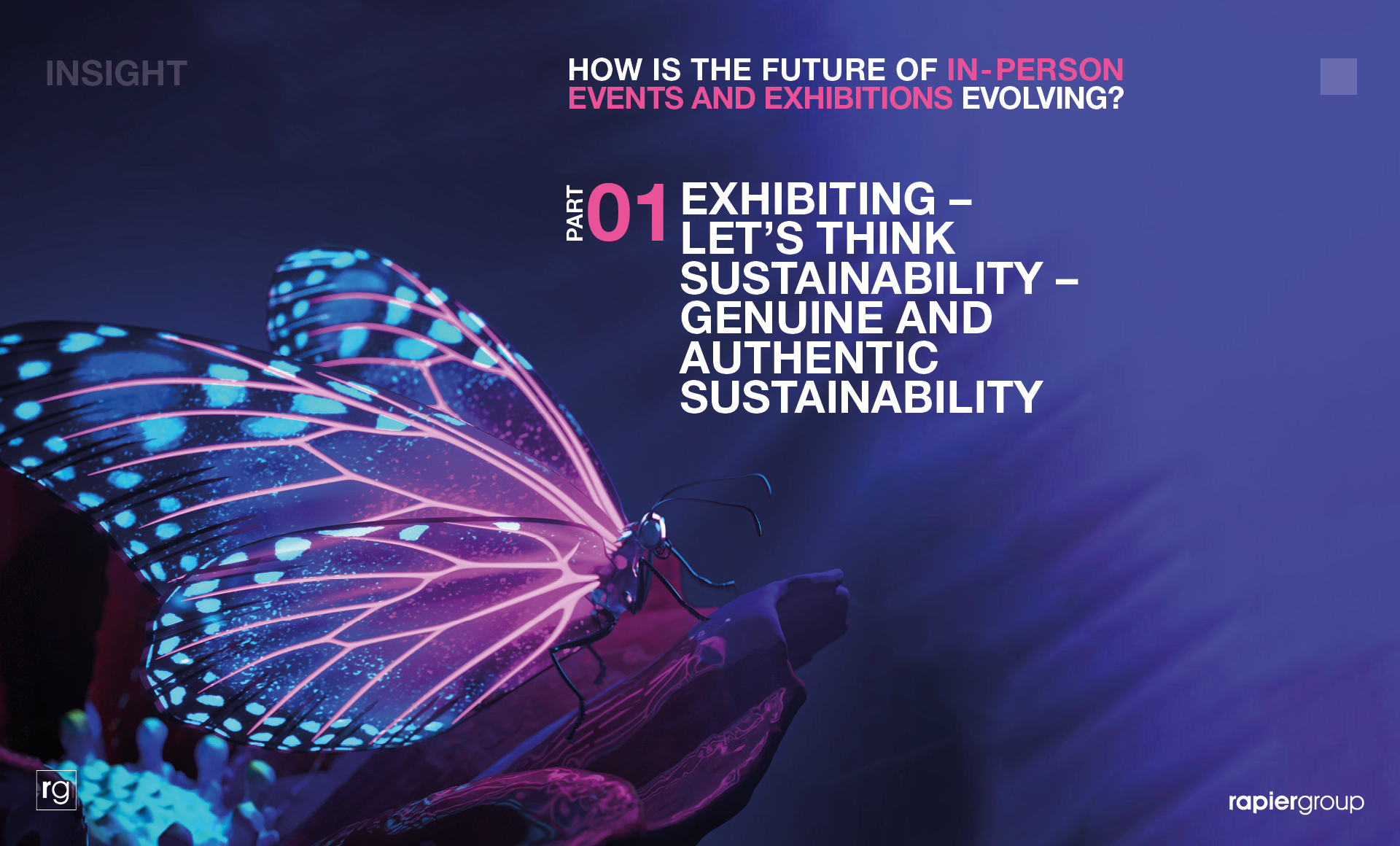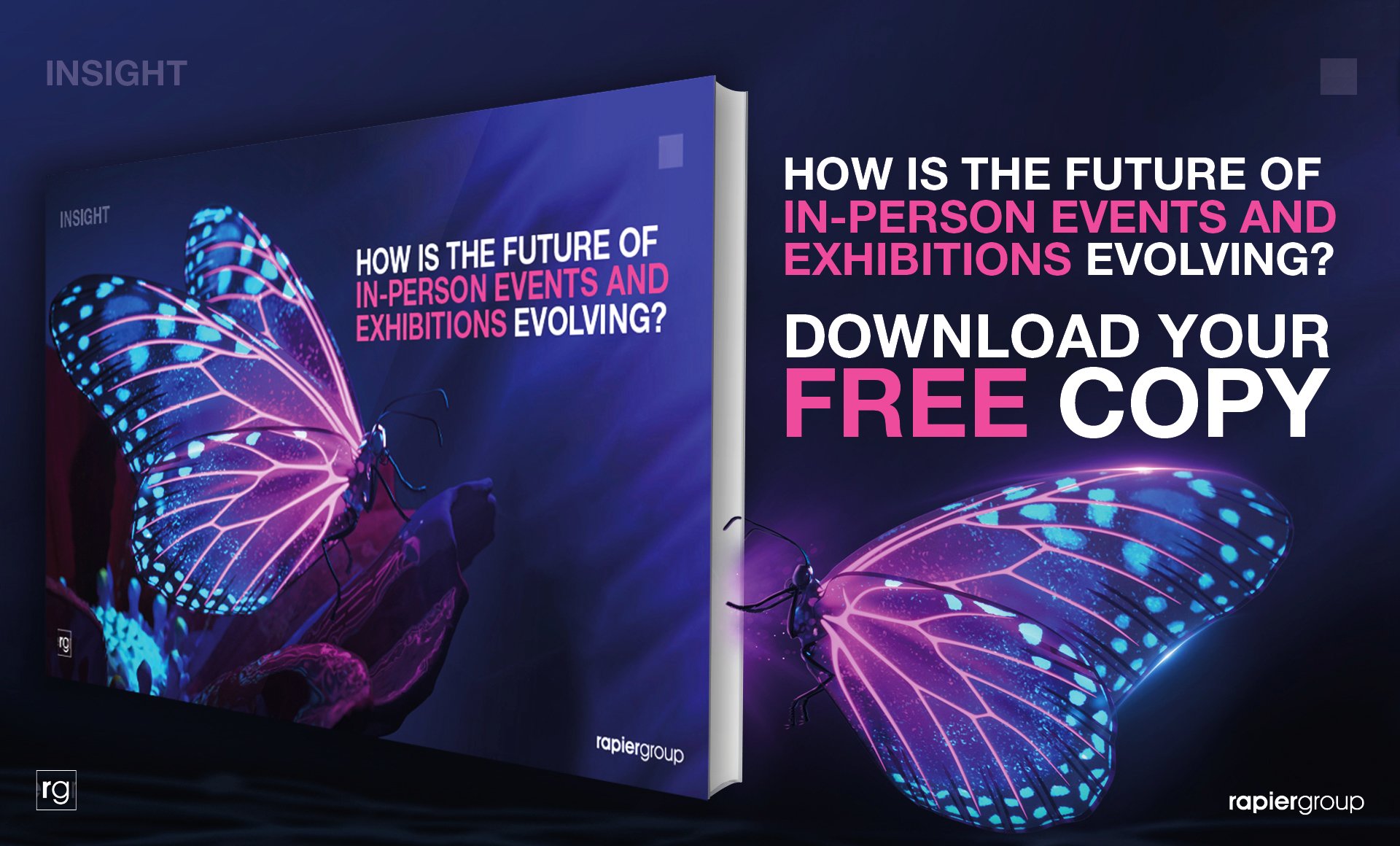
This blog post is Part 1 of a four part series - you can download the whole guide here
The issue of hosting, having a presence at and attending events in a more sustainable way, has been on all our minds for years. There has been a lot of talk, but how much real progress have we made?
The absence of in-person events due to the pandemic has given us the opportunity to reset how we think and do things. After more than 18 months of working virtually, it would be a shame (and irresponsible) for us just to go back to the way we approached events and exhibitions before … just picking up where we left off.
If you are planning your exhibition attendance at a 2022 event, this is your opportunity to start afresh. And it might not just be down to you alone. Some show organisers are driving this change through new packages for exhibitors that offer an adaptable exhibition presence that can be tailored to individual needs. Organisers are also operating a much more sustainable model – a community approach, rather than each exhibitor operating in their own silo.
It will be interesting to see how this model evolves, as the economies of scale mean that, in principle, individual exhibitors should be offered a quality product at an affordable price whilst achieving genuine sustainability targets, which can be measured on an individual as well as a ‘whole show’ basis.
If the show you are attending does not offer this model, and you are responsible for your own presence on a self-build basis, there are some important factors to think about:
- How your show presence fits within a bigger picture (sales and marketing strategy, product life cycles, campaigns, etc).
- The digital user experience – customer and visitor journeys all as one strategy, with your different channels for engagement linking together seamlessly (you may need to rethink your exhibition strategy, presence, and intended experience).
- Pausing for a moment to question what is most important to your customers, and what they really need from you at different points in their journey.
- The purpose of your exhibition presence is that it aligns with your customers’ needs at that point in their journey, and offers them the best and most valuable experience.
- Considering carefully what that experience requires. If much of what you offer to your customers can be delivered through digital channels, you may not need to send an army of sales reps to the show (all leaving their own carbon footprint). Perhaps your presence is more about brand awareness, and offering your customers a hospitable experience, delivered slightly differently, utilising local and more sustainable resources. Increasingly, we are seeing our clients view the experience in this way.
- Goals and measures – not just in terms of how well your presence performs, and ROI, but also genuine measures of the impact your presence and activities have on the environment. And you need to be sure that you will have proof of these measures.
- Lastly, seeking the best in sustainable design and production solutions. It is possible to do things well but differently, and in a sustainable way. A traditional exhibition stand and operating model may not be the answer.
This may all sound very daunting, but it needn’t be. It’s just a case of considering the right elements in the right order, and following a solid strategic and creative process.
Sustainability doesn’t come cheap, but this doesn’t mean that your exhibition presence and customer experience will be compromised as a result. It’s just a case of having the right strategy, and ensuring that your budget is spent on the areas that will benefit you and your customers the most.
This sort of strategy often means change and doing things differently. It can mean venturing into what feels like the unknown, but that need not be a big risk. It can be calculated and, if you are not short-term in your thinking, your strategy can evolve over time, adjusting to your changing goals and your customers needs.
This is the changing world in which we now live. It’s a very exciting time. None of us can predict the future, but, with the right approach, we can be well prepared for it.
So, having questioned our approach and considered the big picture and strategy, we can start to drill into some of the detail. The next step is to look at how we currently measure success and sustainability, and whether a rethink is required...
Enjoyed this first part?
Download the full guide: How is the future of in-person events and exhibitions evolving?
Subscribe and stay up to date
receive essential emails.




